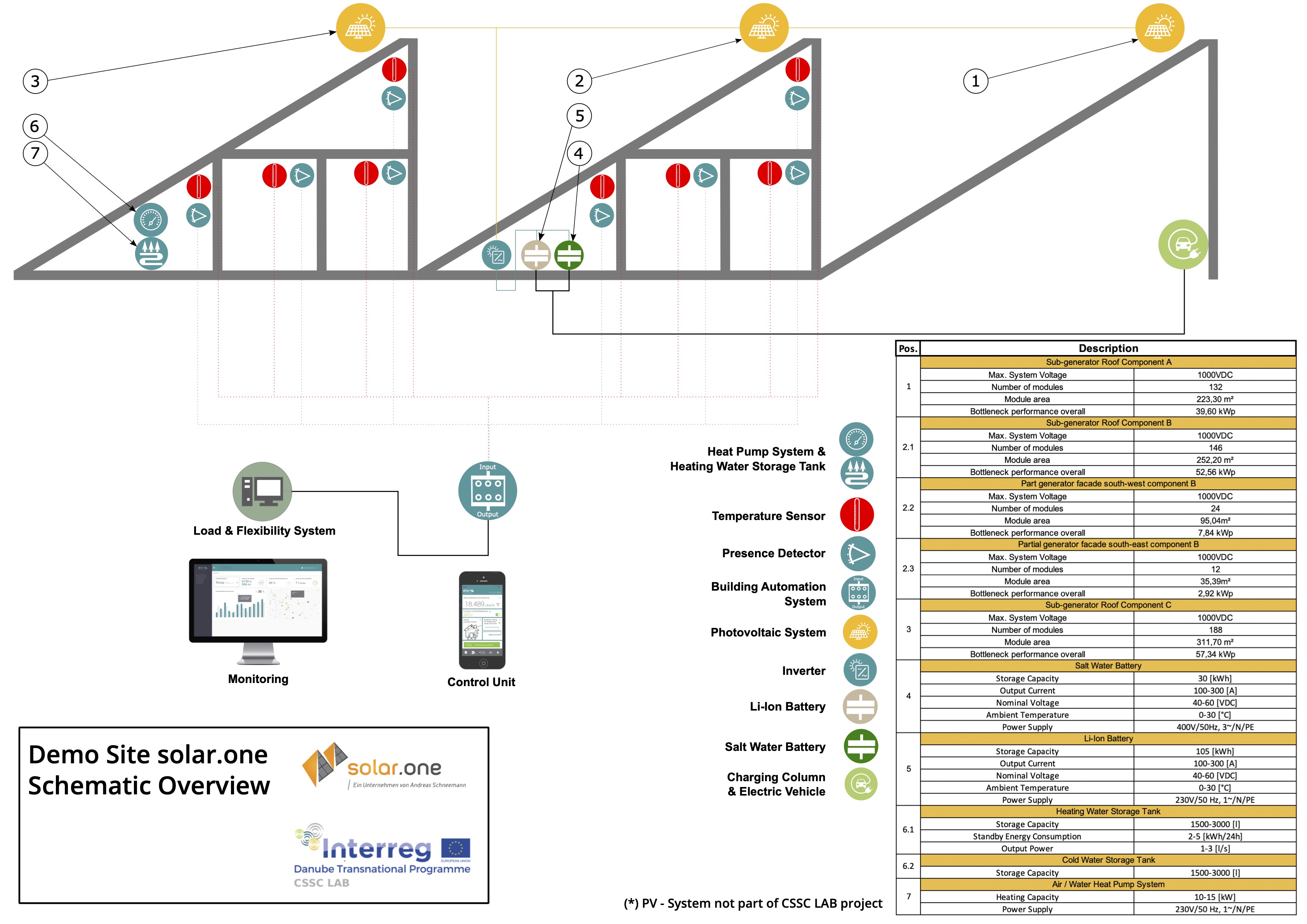CSSC LAB - Exploring the CSSC Demo Sites: ENERGY STORAGE AND SECTOR COUPLING SOLUTIONS IN AUSTRIA
02-12-2020
With its scheduled launch in July 2021, the Austrian demo site in the municipality of Stegersbach will showcase a range of energy storage and sector coupling solutions. Embedded into the solar.one building, a larger competence centre for renewable energy, the demo lab will make it possible for Stegerbach’s 2700 inhabitants as well as those of the surrounding municipalities to experiment with different solutions, replicating those, which best correspond to their specific needs.
For the different energy storage and sector coupling solutions to be tested, specific equipment is required such as a Li-Ion battery, a saltwater battery, two thermal heat storages (heat/cold), a heat exchanger system (heating, cooling)/ building core activation, equipment for mobile storage (EVs), monitoring equipment and a load & flexibility management system. All of these will be procured in the framework of the CSSC Lab project.

Why is this equipment needed? With this equipment, electricity generated with photovoltaic panels will be stored (Li-Ion and salt water batteries) while heat will be captured in thermal heat storages. The electricity will be used for sector coupling for e-mobility (charging e-vehicles) whereas power2heat will be coupled, utilising the activated building core (heat exchanger system). The building will also be equipped with monitoring equipment (temperature and presence monitoring) as well as a load and flexibility management software to ensure all processes run smoothly and are coordinated.
What problem is the demo site addressing? In typical photovoltaic systems, surplus solar energy is fed into the grid for a relatively low price and during times of limited sunshine, all (electric) energy has to be supplied from the grid. With the solutions tested in the demo site, a lot more of the energy generated can be used on site, considerably increasing the self-consumption ratio. In addition, the sector coupling solutions (heat pumps, EV charging) also allow for the utilization of electric energy in other sectors, like heating and mobility, which further increases the proportion of self-consumed energy.
While the PV system is not part of the demo site but of the whole competence centre, it is still important to note that the entire building – which can host 200 people - has a generational capacity of 200KW. This means that it can be entirely energy positive and depend solely on renewable energy sources. Since this amount of energy is sufficient to cover its own needs, the building could also potentially supply neighbouring building with excess PV power. However, for this to become a reality, the necessary legal frameworks still need to be put in place.
All in all, the competence centre and the demo site have the potential to inspire other municipalities and businesses in the region, displaying how different solutions can be applied in a real-life context. In fact, the nature of the site illustrates that energy storage and sector coupling solutions can be picked and mixed in accordance with one’s needs. While serving as a regional space for innovation, dialogue and exchange related to renewable energy and technology, this initiative will also benefit the local community and business who will enjoy greater employment and educational opportunities.
